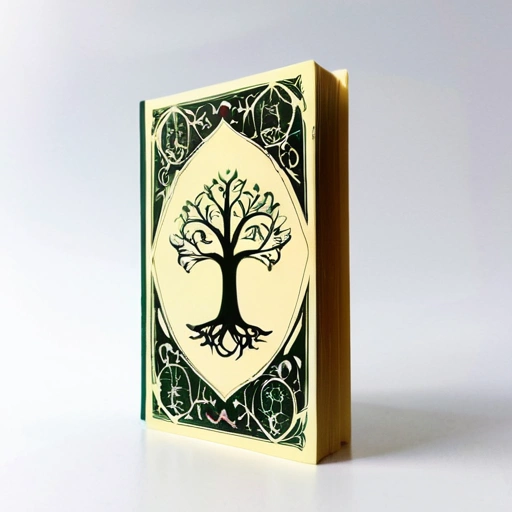What is Braucherei?
Braucherei, often referred to as powwowing, is a unique and ancient form of folk magic practiced by the Pennsylvania Dutch.
This tradition blends Christian mysticism, healing rituals, and natural magic, creating a spiritual practice that intertwines faith with the forces of nature. For centuries, Brauchers—sometimes called powwow doctors—have used their knowledge of prayer spells, herbal remedies, and tree magic to protect, heal, and support their communities. Deeply rooted in both religious devotion and natural magic, Braucherei continues to resonate today, as more people explore its timeless wisdom.
Braucherei emerged from the German folk traditions carried over by the settlers who became the Pennsylvania Dutch, including Anabaptists like the Amish and Mennonites. These communities brought with them a profound connection to both Christian mysticism and the rural magic of their homelands. They believed in the power of Christian prayers and scripture to effect real-world changes, whether curing illness or protecting against unseen forces. Over time, these beliefs became intertwined with the natural world, giving rise to the distinct form of folk magic known as Braucherei.
What distinguishes Braucherei from other forms of folk magic is its emphasis on healing and protection, often through the use of herbalism, faith healing, and tree magic. Brauchers, as the practitioners are known, are skilled in blending the physical and spiritual. They use both herbal remedies—derived from plants and trees considered sacred—and Christian prayers to perform their magic. For example, a Braucher might use the bark of an oak tree in a healing spell, or conduct a ritual beneath a birch tree, which is believed to symbolize purification and new beginnings. These practices highlight Braucherei’s deep connection to natural magic, particularly the belief that trees carry spiritual significance.
Perhaps the most famous example of a Braucherei spellbook is “The Long Lost Friend”, written by Johann Georg Hohman in 1820. This grimoire has been a cornerstone of Pennsylvania Dutch folk magic for nearly two centuries, offering a wealth of spells, prayers, and remedies for everything from stopping a thief to healing sickness. The book includes instructions for creating protection spells and rituals to safeguard against evil spirits and negative influences, drawing on both Christian mysticism and ancient German folk traditions. Another influential text, The Sixth and Seventh Books of Moses, offers more ceremonial rituals, but its influence can also be seen in Braucherei, where practitioners often invoke the names of biblical figures to enhance the power of their spells.
While Braucherei is largely concerned with healing and protection, it also addresses the removal of curses and negative magic. Although Brauchers focus on positive forms of folk healing, they are also called upon to remove hexes or curses. In contrast to the dark magic practiced by hexenmeisters, who are known for casting harmful spells, Brauchers are seen as protectors, wielding protection spells and using prayer rituals to lift evil from their clients. The power of Braucherei lies not only in its spells and charms but also in its use of magical symbols like hex signs, which can often be seen on the barns and homes of the Pennsylvania Dutch. These hex signs serve as protective symbols, intended to ward off evil and bring good fortune to those within.
Much like the charms and talismans worn or carried by practitioners, hex signs represent the physical manifestation of magical power. The signs themselves are rooted in the symbolic power of shapes, colors, and patterns, each of which carries specific meanings. In Braucherei, this fusion of magical symbols and Christian prayers creates a powerful defense against harm. Even today, Braucherei’s influence can be seen in the continued use of hex signs to protect homes and farms from the evil eye and other negative forces.
The connection between Braucherei and the natural world is further illustrated by the use of tree magic in many rituals. Trees, especially the oak, ash, and birch, are believed to hold great spiritual power. In Braucherei, these trees serve as intermediaries between the physical and spiritual realms, with their bark, leaves, and branches often used in herbal remedies and magical rituals. The belief that nature holds the key to healing is central to Braucherei, and it is this reverence for the natural world that links it to other forms of folk magic around the world.
Although Braucherei is unique to the Pennsylvania Dutch, it shares many similarities with other traditions, such as Appalachian folk magic and the practices of the Cunning Folk in Europe. Like Brauchers, these practitioners also used herbalism, healing spells, and protective charms to serve their communities. Both traditions rely on a blend of rural magic and spiritual healing, demonstrating how deeply interconnected these forms of magic are with the daily lives of the people who practice them.
Today, Braucherei is experiencing a resurgence as modern practitioners seek to reconnect with ancient traditions of faith healing and natural magic. With its focus on herbal remedies, healing spells, and the protective power of Christian prayers, Braucherei offers a spiritual path that speaks to both the physical and metaphysical needs of individuals. Its continued relevance shows that while the world has changed since the days of Johann Georg Hohman, the desire for spiritual healing and protection remains universal.
For those interested in learning more about the history and practices of Braucherei, visiting Braucherei Spellbook’s essential book list provides access to key texts like The Long Lost Friend and others that delve into the folk magic traditions of the Pennsylvania Dutch. These resources offer a deeper understanding of how the practices of Braucherei have been preserved and passed down through generations, remaining as powerful today as they were centuries ago.
In the end, Braucherei represents more than just a collection of spells and remedies—it embodies the spiritual and cultural heritage of the Pennsylvania Dutch people. Through its unique combination of Christian faith, natural magic, and a profound connection to the healing power of nature, Braucherei offers a timeless form of magic that continues to inspire and protect those who practice it today.
